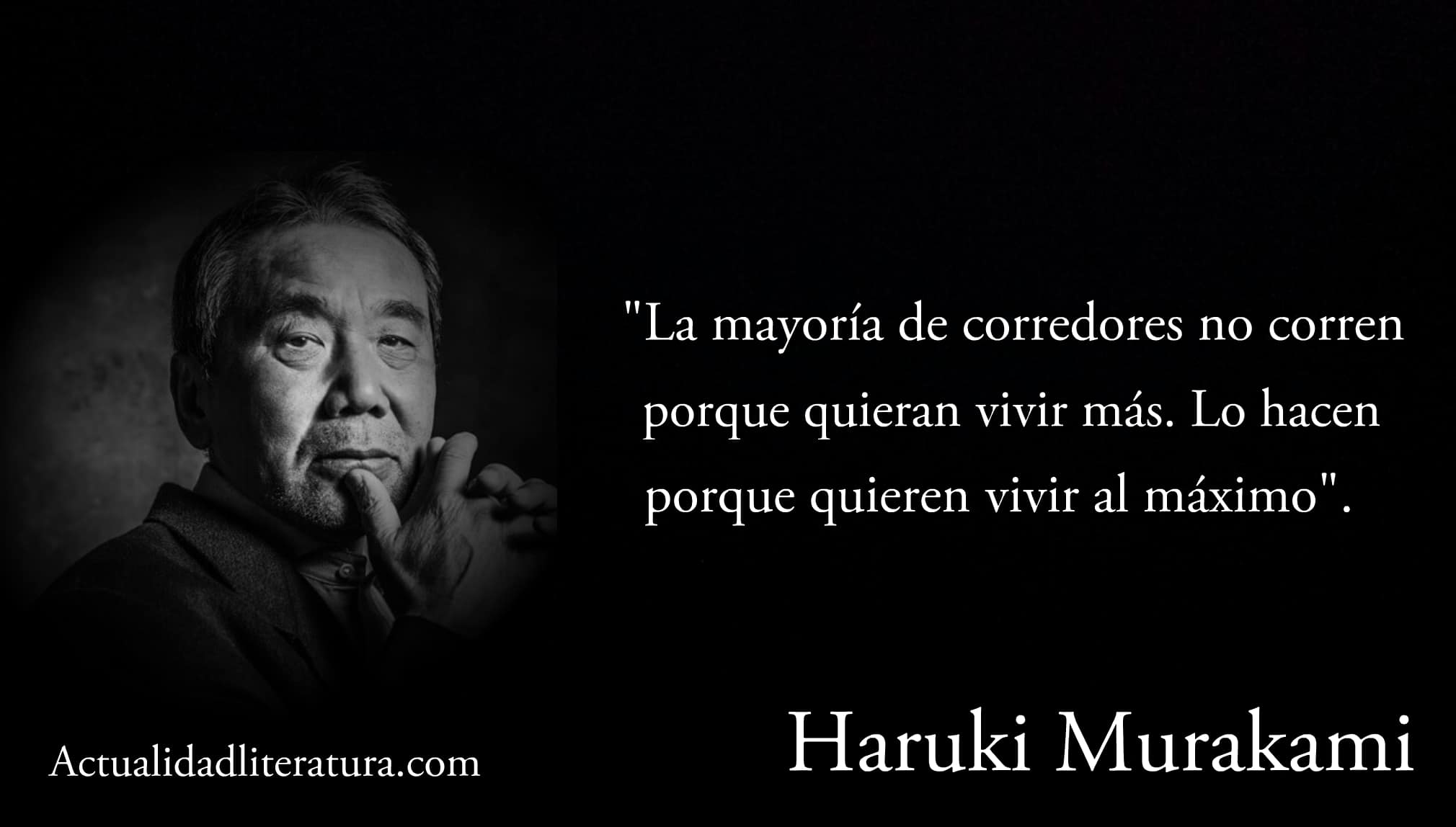
Haruki Murakami.
The death of the commander It is the latest release from celebrated Japanese writer Haruki Murakami. In this title, the eternal nominee for the Nobel Prize in Literature provides an exciting and moving story, which does not leave his huge fan club indifferent. In addition - in a typical circumstance of "franchise authors" - he still does not convince his legion of haters.
In fact, there are not many objective reviews on the two volumes that make up this story. This tour en around a painter with existential problems and a quest as obsessive as it is strange. Preconceived ideas around Murakami's work prevent an "innocent" approach to these new lines. Is it the price of fame and the magnitude of your success?
The author
His name is synonymous with super sales. Just as Michael Jackson was at one time for the music industry or Harrison Ford for Hollywood, a book whose cover bears Haruki Murakami's stamp is a sure hit. At the same time, the responses from audiences and critics are often the same: both adored and defenestrated by larger and larger groups.
He came to the world on January 12, 1949, in Kyoto. That city, along with Kobe and Tokyo, monopolize most of his stories. In the same way, the author frequently demonstrates his predilection for western music. Especially the love he feels for The Beatles is evident. In parallel, he expresses an almost visceral hatred for the glam rock (particularly towards the Duran Duran band).
The inner world of Murakami's protagonists
His characters constantly live turbulent journeys. Beyond external vicissitudes - labyrinthine pursuits, in the case of The death of the commander— the really transcendent element is inner self-discovery. Go to the deepest confines of introspection and delve even further.
Murakami, through its protagonists, shows special interest in dream worlds. There, he exposes a diatribe between fantasy and reality; sometimes in superimposed planes and, at other times, in complementary contexts. They can correspond to dreams, as well as to "the truth": do you live while you sleep or do you sleep to live?
Argument from The death of the commander

The death of the commander.
You can buy the book here: The death of the commander
The eternal crisis
Divorces, separations, impossible loves ... They are common situations in many of the protagonists of Murakami. These characteristics appear again in the hands of the portrait painter around whom it revolves. The death of the commander, Tomohiko Amada. It is about a painter prone to meddle in other people's plots to fill their existential voids and a life as innocuous as it is anodyne.
Thus, the protagonist tends to project his hardships onto others, while feeding his own hopes and those of third parties through fanciful and unreal solutions. Of course, many of these "solutions" are valid. Even on certain occasions they make the difference between living or dying. Finally, understand the need to avoid the worst of misfortunes: forgetfulness.
The death of the commander, in a nutshell
A portrait painter - whose name is never known to the public - embarks on a destinationless journey. Your destination: the intricate mountain roads of the Japanese archipelago. The trigger ?: He was abandoned by his wife. Therefore, the need to flee, escape, search, explore, find ... find yourself.
The crisis of a traumatic separation also drags him to give up his art. In the middle of his journey he meets a woman with whom he believes he falls in love. Although what happened between them is a violent round of sex. Then the lady disappears without explanation, increasing in him feelings of emptiness and hopelessness.
Coincidences and causalities
The protagonist's car breaks down. (This is another frequent aspect in Murakami's narratives: Japanese cars apparently are not as good as in the rest of the world it is believed. In particular, the author considers the Subaru brand as the Asian equivalent of the Swiss Volvo: vehicles that They pretend to be fancy, but they are not).
Introspection
Now the trip will be “inside”. For this purpose, a beautiful house in the middle of a mountain will be very helpful to Tomohiko.. The home belongs to a famous elderly painter friend of hers, whose last days are spent in a care facility for the elderly.
Inside a mysterious room (discovered with inexplicable help), get a painting titled The death of the commander. This Piece represents a scene from the famous opera Don Giovanni by Lorenzo da Ponte with music by Wolfgang Amadeus Mozart.
A new disappearance
The disgraced portraitist receives a commission: to draw a young adolescent. This job allows you to enjoy painting again. He had regained the habit before, but not in a very happy way, obsessed with a man and his white Subaru. Likewise, a deranged Tomohiko links the disappearance of the mysterious woman (from the night of lust) with her crashed vehicle.
The assignment will also bring with it a new romantic interest: the girl's aunt. When the universe seems to balance, another disappearance takes place: the girl who must portray. At that point, the “crazy things” begin to happen in an uncontrollable and inexplicable way. Consequently, neither the main character nor the readers know very well what is happening.
A bucolic atmosphere
Murakami on more than one occasion has skirted the limits of terror. But not so much because of "classic" paranormal events, but because of the terror manifested in the minds of its protagonists. The cause: impotence of not being able to determine where reality begins and where nightmares end (or vice versa).

Haruki Murakami quote.
En The death of the commander a lush and humid forest becomes his new labyrinth. They are no longer the corridors of an old hotel or the streets devastated by an earthquake. It is a vegetable mass that at times looks impenetrable, but above all, very intimidating. Therefore, the introspective journey of this section derives from exploring the depths of a thick jungle.
For all the senses
In this book, the Japanese author shows off his ability to build oppressive environments. Where its protagonists and readers feel asphyxiated in a world as beautiful as it is dangerous and “treacherous”. Is it necessary to walk to the depths to find the truth? According to Murakami, to transcend, the answer is yes.
Murakami is characterized by being an author who divides opinions. This can be a good symptom, his novels have an attractive essence that envelops you in such a way that you feel pleasure and need to finish it.
-Gustavo Woltmann.